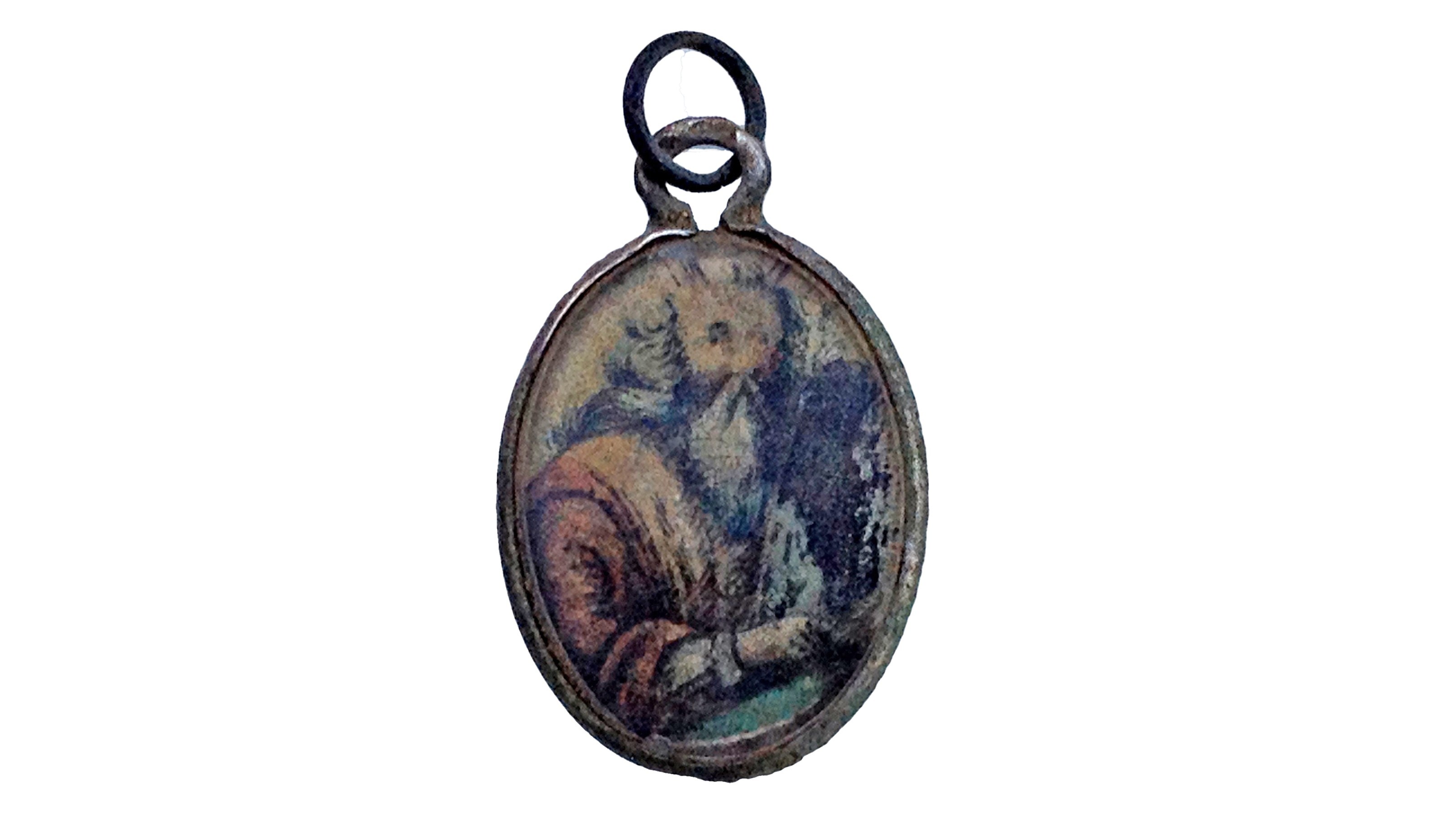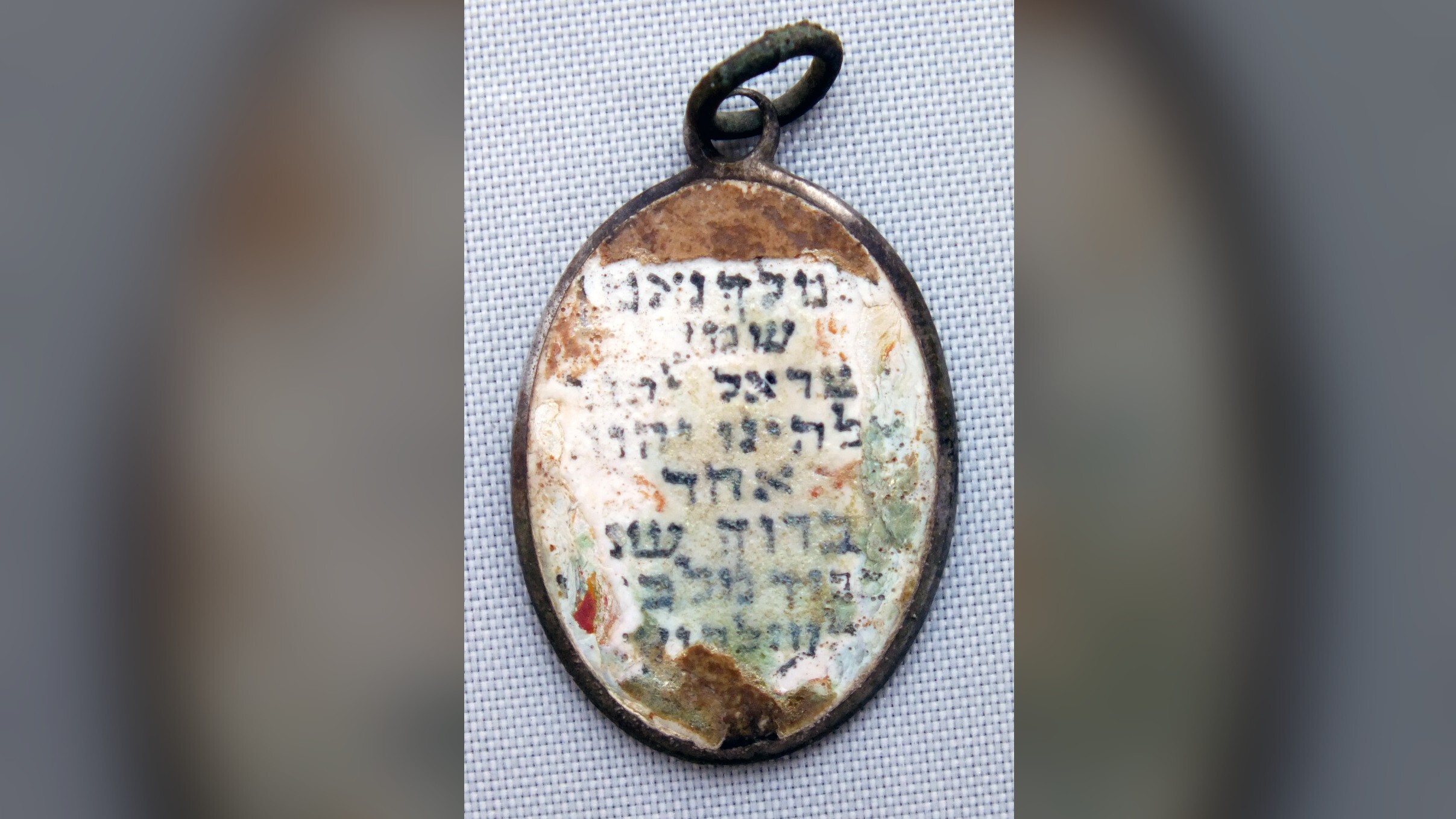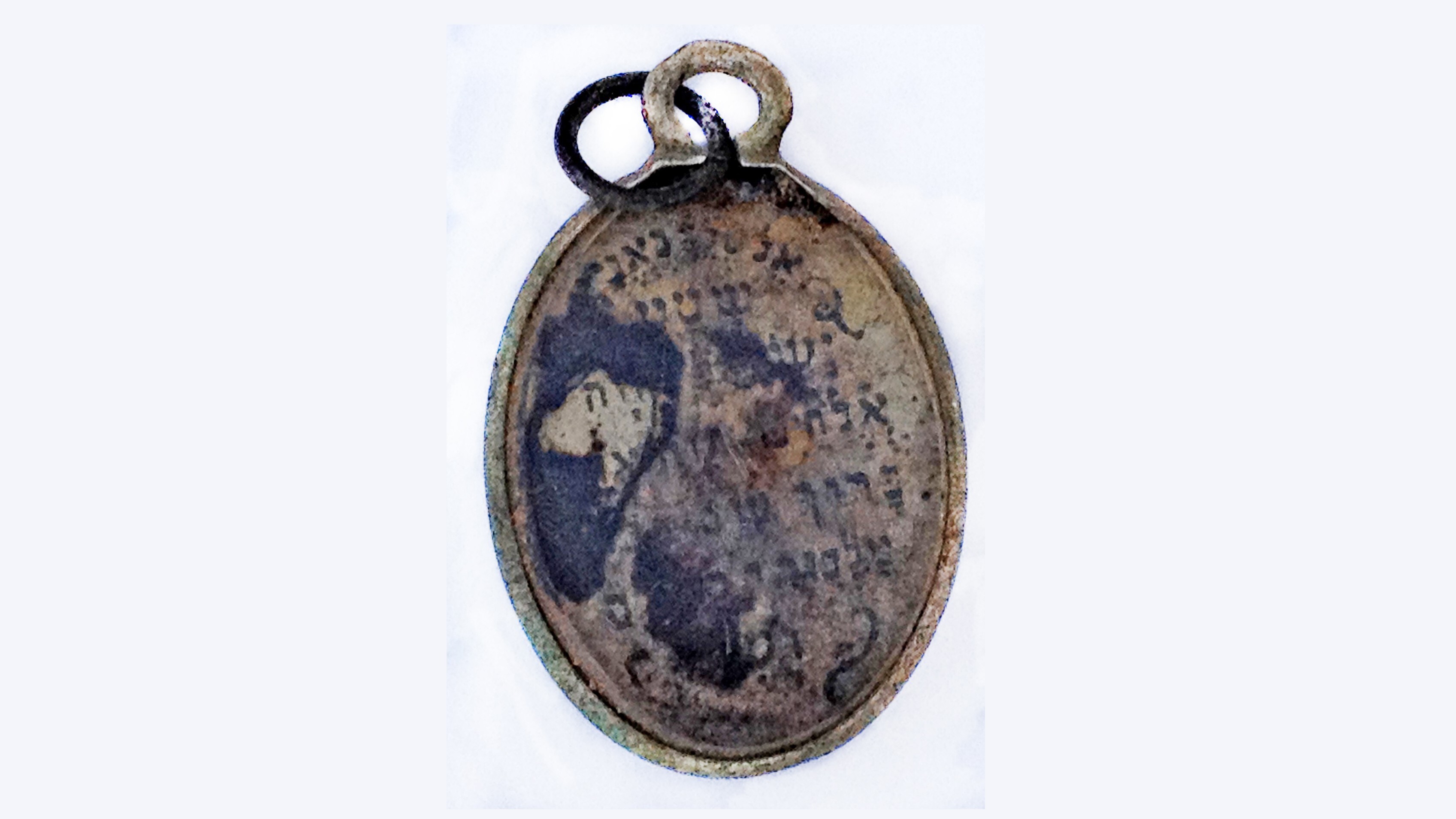Pendants from Holocaust victims found near gas chamber in Poland
The pendants feature Moses and Ten Commandments

Archaeologists in Poland have discovered three pendants that belonged to people who were murdered at Sobibor, a Nazi death camp in eastern Poland.
The researchers discovered two of the pendants in places where Holocaust victims were forced to undress before guards herded them into gas chambers; they discovered the third pendant near a mass grave at the death camp, according to the Israel Antiquities Authority (IAA).
"Little is known about the stories behind the pendants, which are heartbreaking," Yoram Haimi, an archaeologist with the IAA who co-directed the excavation, said in a statement released Jan. 27.
Related: In photos: Girls' hut found at Nazi death camp
It took about 10 years of archaeological excavations to find all three pendants at Sobibor. Though each pendant is different, all three have depictions of Moses and the Tablets of the Law (also known as the Ten Commandments) on one side, and the Hebrew prayer, "Shema Yisrael," which translates to "Hear O Israel," on the other.
For Jews, the Shema is "an affirmation of God's singularity and kingship," according to My Jewish Learning, a site run by 70 Faces Media, a nonprofit, nondenominational media organization. "Its daily recitation is regarded by traditionally observant Jews as a biblical commandment." Traditionally, Jewish people say the prayer as their last words before death.
The words framed in each metal pendant were inscribed by hand. During the past year, researchers managed to identify each pendant's country of origin: Lviv, Ukraine; Poland; and Czechoslovakia.
Sign up for the Live Science daily newsletter now
Get the world’s most fascinating discoveries delivered straight to your inbox.

"It has been possible to identify a kind of tradition or fashion among the Jewish communities of Eastern Europe with pendants that were inscribed with 'Shema Yisrael' on one side and a depiction of Moses and the Tablets of the Law on the opposite side," Haimi said. However, it's unclear how the pendants became widespread.
"Were they distributed in synagogues by local Jewish communities or possibly produced for individual orders?" Haimi wondered. "Research of the pendants is ongoing and we invite the public to provide us with details concerning them."
Of the 6 million Jews, as well as people with disabilities, Roma, Poles and other Slavic people killed during the Holocaust, about 250,000 people — largely Jews from Poland the the occupied parts of the Soviet Union — died at Sobibor between 1942 and 1943, according to Britannica. However, the death toll was likely higher, Haimi, whose uncle was killed at the camp, previously told Live Science.


Sobibor was connected to a railroad that transported Jews captured from around Europe, and it's likely that not everyone on the trains, or those taken to the death camp by foot or truck, were included on the lists used to estimate the death toll, Haimi previously said.
"The personal and human aspect of the discovery of these pendants is chilling," Eli Eskozido, director of the IAA, said in the statement. "They represent a thread running between generations of Jews — actually a thick thread, thousands of years old, of prayer and faith."
The new excavations were directed by Wojciech Mazurek, an archaeologist from Poland, Haimi and Ivar Schute, an archaeologist from Holland, all of whom were assisted by local residents.
Originally published on Live Science.

Laura is the archaeology and Life's Little Mysteries editor at Live Science. She also reports on general science, including paleontology. Her work has appeared in The New York Times, Scholastic, Popular Science and Spectrum, a site on autism research. She has won multiple awards from the Society of Professional Journalists and the Washington Newspaper Publishers Association for her reporting at a weekly newspaper near Seattle. Laura holds a bachelor's degree in English literature and psychology from Washington University in St. Louis and a master's degree in science writing from NYU.










